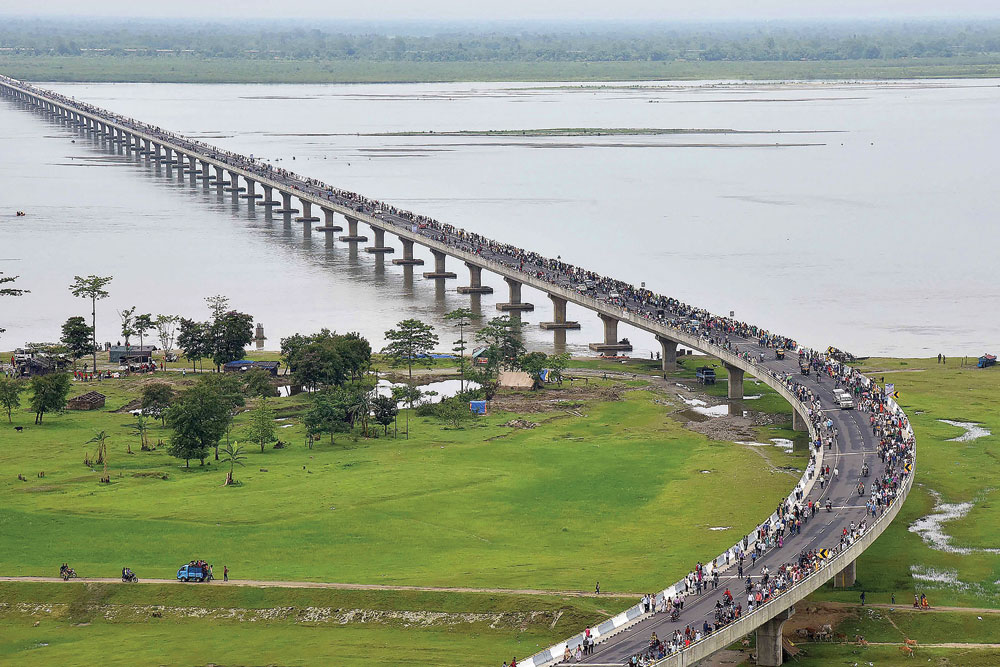India’s Water Vision addresses major water-related challenges, highlights ongoing interventions, and provides recommendations for ensuring sustainability and acting as a model for other countries seeking to attain universal access to clean water and sanitation.

The Water Vision of India
- India’s Water Vision is a government program that aims to provide clean and safe water to all Indian citizens.
- It was introduced in 2019 with the goal of improving water security, increasing water efficiency, and increasing the use of recycled water.
- The program also emphasizes water resource conservation and the promotion of sustainable water practices.
- It is a plan unveiled as part of Prime Minister Narendra Modi’s Vision India 2047 initiative.
The Value of India’s Water Vision
- Climate change: India’s Water Vision arrives at a critical juncture, as the IPCC’s Sixth Assessment Report confirms the negative impacts of human-caused climate change on water availability and security, and the United Nations 2023 Water Conference convenes after a 46-year hiatus.
- G20 presidency: India’s G20 presidency has the potential to set an example for other countries by prioritizing water action, resulting in a global water action plan with clear commitments and pledges to accelerate progress toward reaching SDG 6 by 2030.
Water Sector Challenges and Interventions in India
- Jal Jeevan Mission: While the Jal Jeevan Mission has increased tap connections in rural households, there is still a need to ensure water supply reliability and quality through investments in source sustainability and water quality monitoring for better social, economic, and public health outcomes.
- Groundwater management: Improve groundwater governance by making significant headway in decision-making through the development of a groundwater atlas, aquifer mapping, and comprehensive monitoring. Encourage states such as Rajasthan and Punjab to pass bills and completely implement the central government’s model groundwater law.
- Namami Gange Programme and Atal Mission for Rejuvenation: Initiatives such as the Namami Gange Programme and the Atal Mission for Rejuvenation and Urban Transformation focus on pollution reduction and river rejuvenation by better wastewater management. Realize the irrigation potential of treated wastewater by improving treatment facilities and pricing freshwater appropriately.
- The Per Drop More Crop program aims to increase water use efficiency in irrigated agriculture by promoting micro-irrigation systems such as drip and sprinkler technologies. Increase the adoption of water-saving technologies by providing tailored subsidies to small and marginal farmers.
- Atal Bhujal Mission: Involve local communities in water management through programs such as the Atal Bhujal Mission, which seeks to improve groundwater management in water-stressed blocks by involving communities in the development of water security plans, thereby ensuring climate resilience.
Recommendations for Ensuring Water Actions’ Sustainability
- Ensure a long-term source: Ensure safe access to household water services by focusing on source sustainability and water quality monitoring, which will result in positive social, economic, and public health outcomes.
- Immediate groundwater regulation: Encourage all states, particularly major groundwater-consuming states, to completely implement groundwater regulation legislation and take prompt action to address groundwater overexploitation.
- Improve wastewater treatment: Increase the capacity of wastewater treatment infrastructure to treat a greater percentage of municipal sewage, and ensure that freshwater is reasonably priced to encourage safe reuse of treated water for irrigation.
- Efficient water use practice: Increase the adoption of water-saving technologies in agriculture by providing targeted subsidies to small and marginal farmers, thereby facilitating the adoption of water-efficient practices and possibly saving 20% of current irrigation water by 2050.
- Improving community engagement: Encourage ongoing community participation in water management by ensuring the creation and execution of yearly water security plans, as well as taking corrective action when necessary, to ensure water security in vulnerable areas.
@the end
India’s Water Vision provides a comprehensive roadmap for addressing water-related challenges and attaining universal access to clean water and sanitation. India can use its G20 presidency to accelerate progress toward SDG 6 and serve as a model for global water action by sharing its successes, discussing the sustainability of its projects, and giving assistance to other countries.
Source: https://pib.gov.in/PressReleasePage.aspx?PRID=1888763
